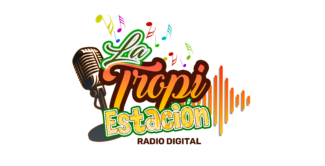Understanding Digital Radio Technology
The advent of digital radio technology has significantly transformed the landscape of audio broadcasting. Unlike traditional analog radio, which transmits signals as continuous waves, digital radio encodes audio signals into discrete digital data. This conversion facilitates several advantages, most notably enhanced signal quality and audio clarity. Digital Broadcasting standards such as DAB (Digital Audio Broadcasting) and HD Radio exemplify this shift towards digital formats. DAB uses compression techniques to deliver multiple channels within the same frequency band, thereby maximizing the use of the radio spectrum. HD Radio, on the other hand, allows broadcasters to transmit both analog and digital signals simultaneously, enhancing the listening experience without replacing the existing infrastructure.
One of the primary distinctions between digital and analog radio lies in signal robustness. Digital radio signals are less susceptible to interference, which results in a cleaner audio experience. Listeners often notice fewer dropouts and a more consistent sound quality, making digital radio a preferred choice for many. Furthermore, digital technology enables broadcasters to transmit additional data alongside the audio stream. This includes artist information, song titles, and real-time updates about programming. Such metadata not only enriches the listening experience but also promotes listener engagement. Users can quickly identify songs and access more details about their favorite artists, fostering a deeper connection with the content.
The implications of these advancements extend beyond improved audio quality. Digital radio technology opens avenues for interactive features such as song skipping, personalized playlists, and the option to pause and rewind live broadcasting. As audio broadcasting continues to evolve, it presents both challenges and opportunities for broadcasters and consumers alike. Understanding the fundamentals of digital radio technology is essential for navigating this new era and appreciating the enhanced experiences it offers to listeners.
The Impact of Digital Radio on Audiovisual Media Consumption
The advent of digital radio has significantly transformed the landscape of audiovisual media consumption. Traditionally, radio served as a primary source of entertainment and information for audiences, characterized by scheduled programming and limited interactivity. However, with the emergence of digital platforms, there is an observable shift toward on-demand audio content. Listeners are now favoring services that allow them to select what they want to hear and when they want to hear it, thus prioritizing convenience and personalization over traditional live broadcasts.
This trend is particularly evident in the rising popularity of podcasting, which has become a dominant force in audio media. Podcasts offer content that caters to a variety of interests, from storytelling to educational programming, thereby attracting diverse audiences. The flexibility that podcasts provide aligns with the preferences of modern listeners, who appreciate being able to consume content at their own pace. This shift has also influenced live radio, pushing content creators to adapt their offerings to maintain relevance in an increasingly competitive environment.
Furthermore, digital radio presents unique opportunities for content creators and broadcasters to explore niche programming. By utilizing streaming technologies and online platforms, small-scale producers can reach targeted audiences with specialized content that may not have found a place in traditional media. This democratization of content creation enables a broader range of voices and perspectives to emerge, enhancing the richness of media landscape.
Looking ahead, the integration of digital radio with smart devices holds promise for further transforming media consumption. As technology advances, new possibilities will likely arise, allowing for seamless streaming and interaction with content. The future of digital radio is poised to redefine how audiences engage with audio media, making it an exciting arena for both listeners and creators alike.
